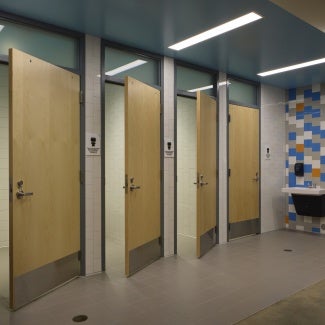Architecture as a value proposition
Contributed by Barry Lynch, AIA, CFM
Chapter 6.02
When selling your services to a potential client, it is important to sell the value of good architecture rather than the cost of good architecture. Explore best practices on how to show clients the value your services provide.
The value of good architecture
The value of good architecture relates to the business aspect of architecture. Consider the value added by designing a better space plan. Better space offers a better interior work environment, which can improve work efficiencies. Clients will understand the cost much better if you can show them the value your service will provide.
The opportunity
Today's turbulent business environment offers architects unique opportunities to leverage design skills to create new business relationships with clients. Architects can move from a “commodity market,” in which the value of their services is measured by the deliverables they produce, to a “value-based market,” in which the value of their services is measured by the actual value that accrues to the client from those services.
Learn from others
Here are key findings gleaned from an international management consultants’ conference that focused on this subject:
- Consulting is different from the design business, and it requires a different mindset. To make the transition from the former to the latter, you must identify opportunities, identify resources, and capture and leverage your intellectual capital.
- Architects think clients are price-sensitive, but clients are actually value-sensitive.
- To make the transition to a higher level of compensation, architects must change their mindset from a “vendor mentality” to a “peer mentality.” Here’s the five-step process to higher compensation:
- Identify the economic buyer.
Develop a relationship with the economic buyer.
-Demonstrate an economic outcome based on the client's business objectives.
-Define criteria for measuring the success of the project.
-Identify your economic value.
- Collaboration is a growing business trend. New practice areas require a significant learning curve. Self-education, collaboration, and mentoring are ways to build your practice. Join business groups that have social networks.
- Clients will continue to outsource needed services.
- Sell your intellectual capital. Take your specialty and break it down into incremental parts that can be sold over the internet. Train and license others in your specialties.
- Become a “category authority,” not a “boutique consultant.”
- Make your value proposition up front. Clients typically devote 1½ to 4 minutes to making a decision about a proposal.
Speak the language of clients
Enhance your credibility with business executives by speaking to them in their own language. Some tips for developing closer relationships with business executives:
- Know the stock price and price-to-earnings (P/E) ratio of your client's company.
- Buy the client's product or service.
- Talk to the receptionist.
- Talk casually to employees and customers.
- Visit the competition.
- Find a unique fit for your services.
- Be prepared to drop a prior engagement to meet with a client.
- Determine in advance the value you will add to your client's business.
Market the value, not the cost
Present value-added services in a “value package” that offers a menu of options. List the options in order of cost, from lowest to highest. Enumerate the scope and value differences among the services offered. For example, the value proposition for strategic facilities planning is not in identifying and cataloguing the space, but in measuring the impact of the space on earnings per share, then working with the client to manage and control costs over time. This demonstrates far greater knowledge of the client's principal concern—the bottom line—than simply telling the client how much space to build. You will have the client's attention when you can make informed statements such as, “This proposal will save you $100 million in operating-cost increases and capital expenditures over the next 10 years.”
Find the opportunities
The greatest opportunities for consulting include:
- The blending of two professions: architecture and business
- Planning
- Process improvement
- Marketing and image improvement
- Human resources and financial management
(“Space standards” can be a tool for financial management. Demonstrate it by preparing a value analysis of a client's hypothetical growth with and without space standards; then convert the results to a net present value.)
About the contributor
Barry Lynch, AIA, CFM, is with Lynch Consulting in Pfafftown, N.C.
AIA collects and disseminates Best Practices as a service to AIA members without endorsement or recommendation. Appropriate use of the information provided is the responsibility of the reader.
Feedback
Help build AIA Best Practices by contributing your experience. Contact us with your feedback or ideas for an article.



